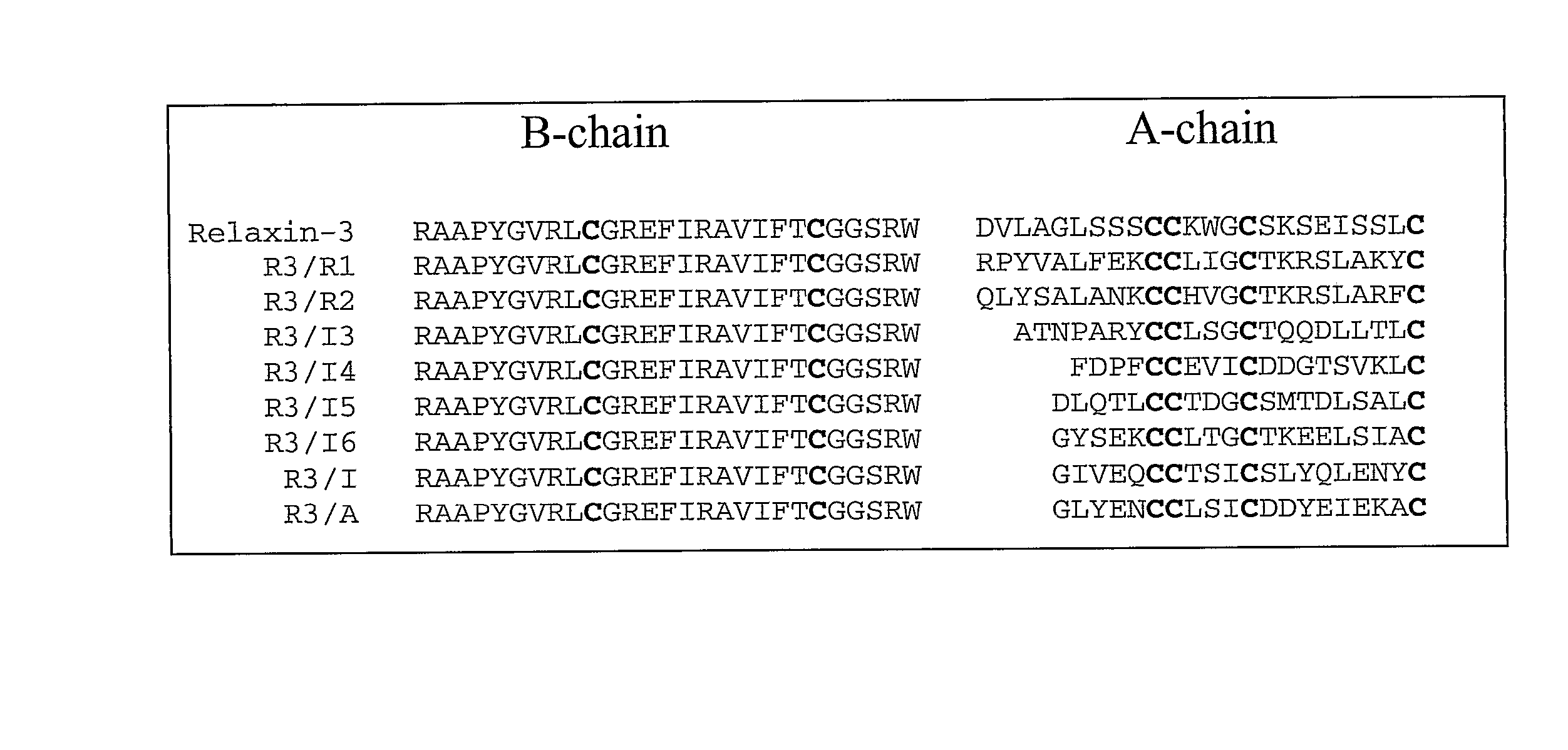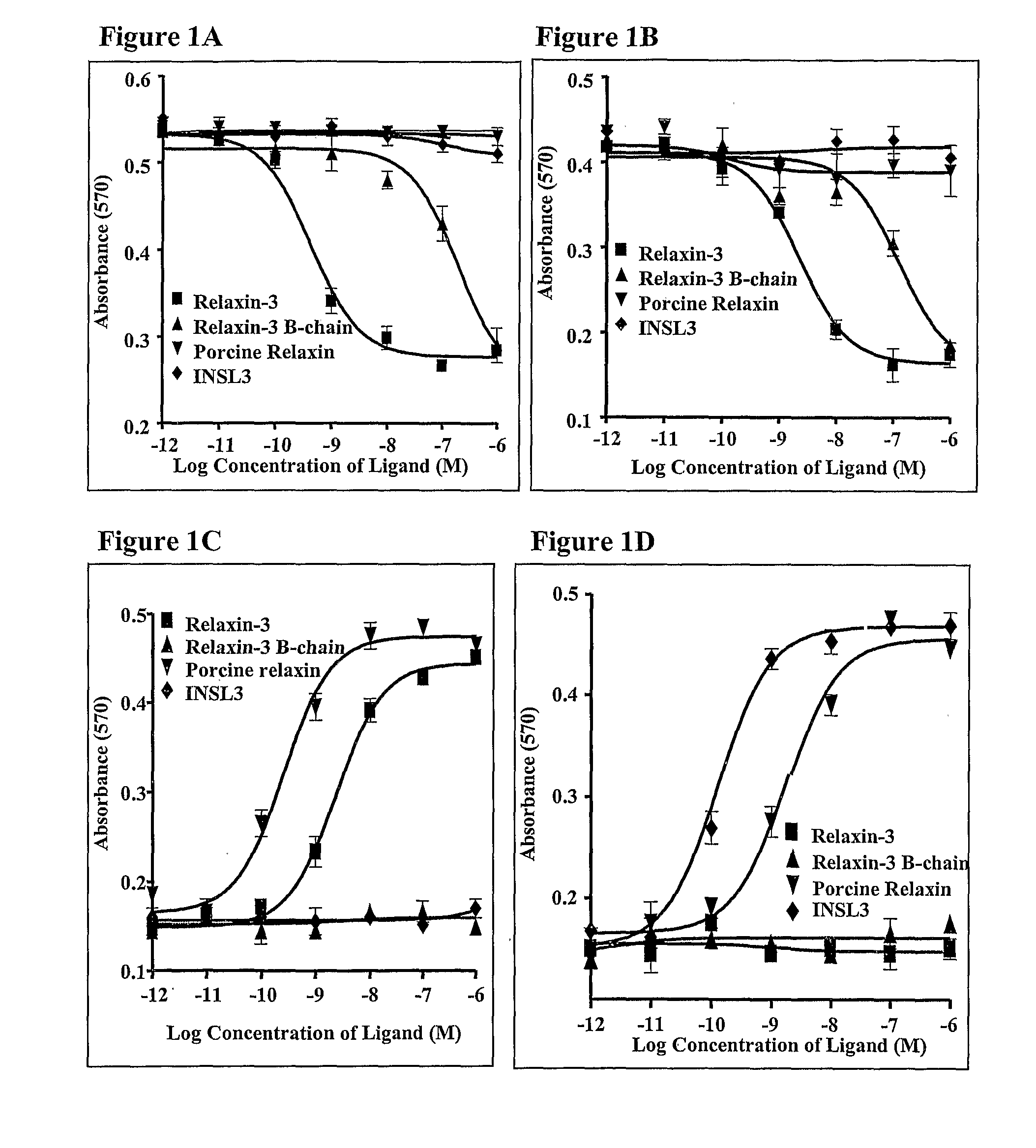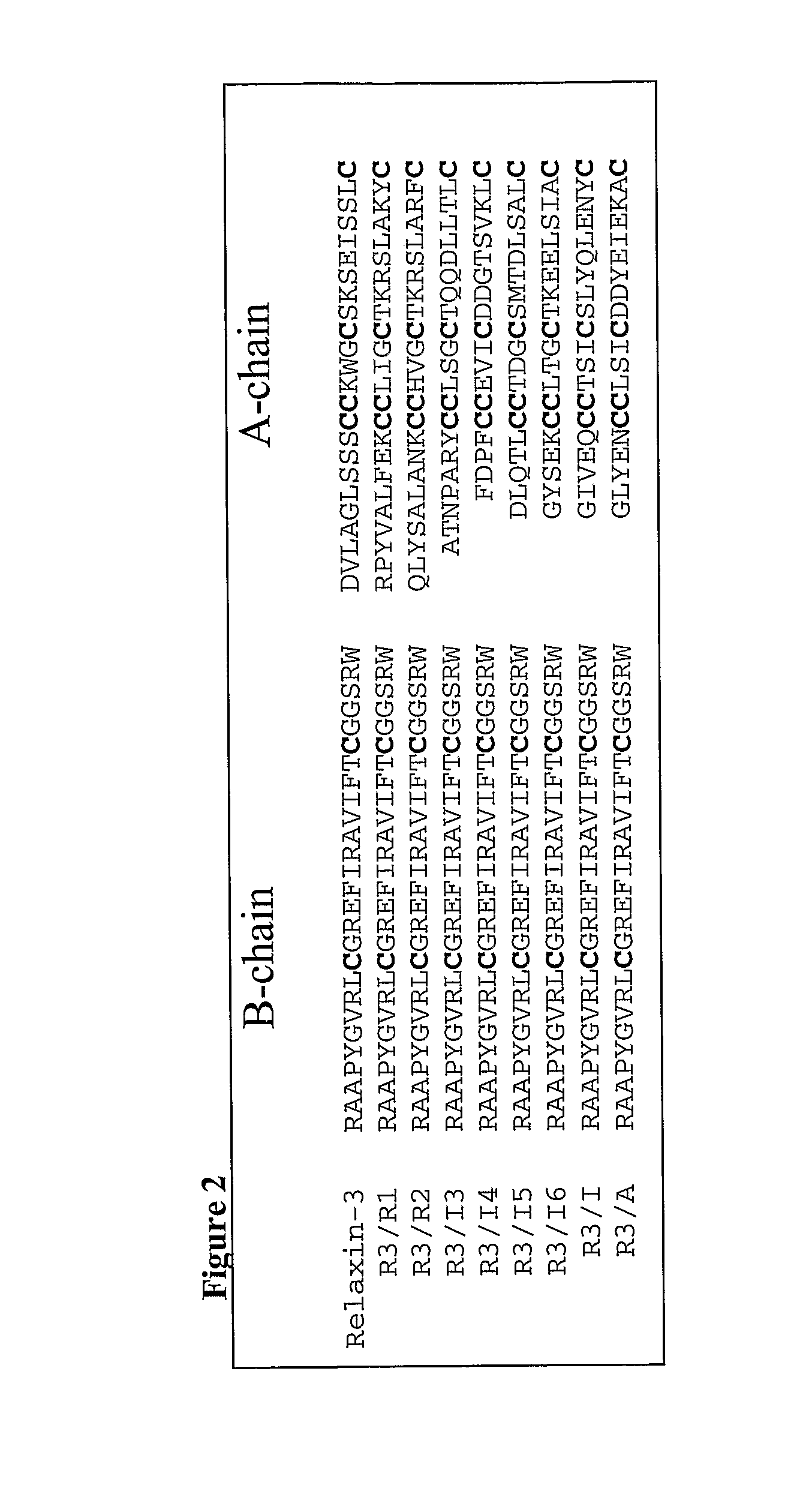Relaxin-3 Chimeric Polypeptides and Their Preparation and Use
a technology of relaxin and chimeric polypeptides, which is applied in the field of biologically active relaxin3 chimeric polypeptides and their preparation, can solve the problems of confusion of functions of gpcr135 or gpcr142
- Summary
- Abstract
- Description
- Claims
- Application Information
AI Technical Summary
Problems solved by technology
Method used
Image
Examples
example 1
Cloning, Expression and Purification of Relaxin-3 Chimeric Polypeptides, GPCRs, LGRs, and Expression Vectors Encoding Same
Construction of Chimeric Polypeptide Expression Constructs
[0211] A series of chimeric polypeptides were prepared by creating gene cassettes which included coding regions for an alpha peptide signal peptide, a FLAG tag, the human relaxin-3 B-chain, the human relaxin-3 C-chain, and an A-chain from one of the following: relaxin-1 (Hudson et al., 1983, Nature, 301:628-631), relaxin-2 (Hudson et al., 1984, EMBO Journal, 3:2333-2339), INSL3 (Adham, et al., 1993, Journal of Biological Chemistry 268:26668-26672), INSL4 (Koman et al., 1996, Journal of Biological Chemistry, 271:20238-20241), INSL5 (Conklin et al., 1999, Genomics, 60:50-56), INSL6 (Lok et al., 2000, Biology of Reproduction, 62:1593-1599), insulin, or an artificial A-chain, in which only the cysteine residues remained unchanged while all the other amino acids residues were randomly assigned. The junction...
example 2
Characterization of Relaxin-3 B-chain Agonist Activity Towards GPCR135, GPCR142, LGR7, and LGR8
[0226] It has been shown that synthetic human relaxin-3 B-chain alone, but not A-chain, is an agonist for both GPCR135 and GPCR142 (Liu et al., 2003, Journal of Biological Chemistry, 278:50754-50764 and Liu et al., 2003, Journal of Biological Chemistry, 278:50765-50770). Those studies were repeated herein in SK-N-MC / β-gal cells, which harbor a β-galactosidase gene under the control of a cAMP responsive element (CRE) (Liu et al., 2001, Molecular Pharmacology, 59:420-426). In such SK-N-MC / β-gal cells, an increase in intracellular cAMP concentration leads to increased β-galactosidase gene expression, the activity of which is measured using Chlorophenol Red-β-D-Galactopyranoside (CPRG) as the substrate.
[0227] The results indicate that relaxin-3 B-chain inhibited forskolin-stimulated β-galactosidase activity in SK-N-MC / β-gal cells expressing GPCR135 (with an EC50 value of 88 nM, FIG. 1A) or ...
example 3
Pharmacological Characterization of Relaxin-3 Chimeric Polypeptides by Radioligand Binding
[0228] The inventive chimeric polypeptides were tested as ligands for GPCR135 (FIG. 3A), GPCR142 (FIG. 3B), LGR7 (FIG. 3C) and LGR8 (FIG. 3D) in radioligand binding assays to evaluate their receptor binding properties.
[0229] Radioligand binding assays for GPCR135 and GPCR142 were performed as previously described (Liu et al., 2003, Journal of Biological Chemistry, 278:50754-50764 and Liu et al., 2003, Journal of Biological Chemistry, 278:50765-50770). Membranes from COS-7 cells transiently transfected with either the GPCR135 expression vector or the GPCR142 expression vector, each described supra, were incubated with [125I,]-relaxin-3 at a final concentration 100 pM in 96-well plates. Peptides for competition binding studies were added to the binding mix (final volume: 200 μl) in binding buffer [50 mM Tris-HCl, pH 7.5, 5 mM EDTA, 1% bovine serum albumin, 0.1% protease inhibitor cocktails (Si...
PUM
| Property | Measurement | Unit |
|---|---|---|
| absorbance at wavelength | aaaaa | aaaaa |
| temperature | aaaaa | aaaaa |
| temperature | aaaaa | aaaaa |
Abstract
Description
Claims
Application Information
 Login to View More
Login to View More - R&D
- Intellectual Property
- Life Sciences
- Materials
- Tech Scout
- Unparalleled Data Quality
- Higher Quality Content
- 60% Fewer Hallucinations
Browse by: Latest US Patents, China's latest patents, Technical Efficacy Thesaurus, Application Domain, Technology Topic, Popular Technical Reports.
© 2025 PatSnap. All rights reserved.Legal|Privacy policy|Modern Slavery Act Transparency Statement|Sitemap|About US| Contact US: help@patsnap.com



